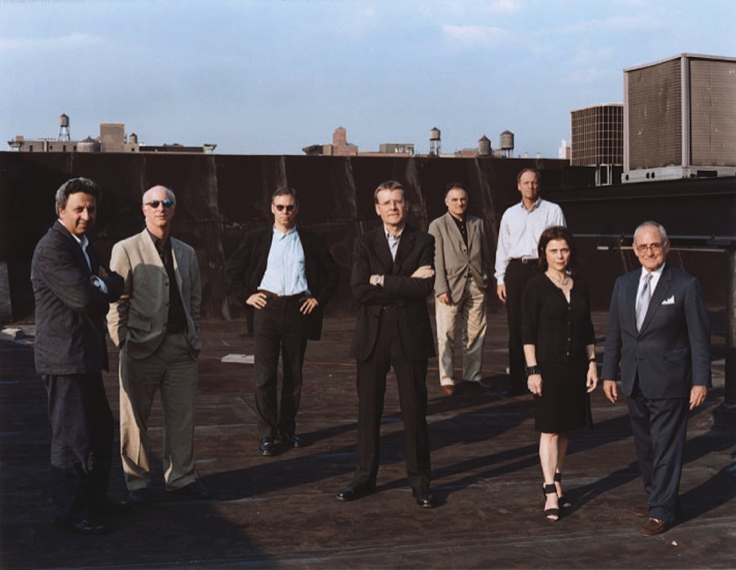About Judy DiMaio
Summary: Judy attributes much of her cross-cultural interests and associative thinking, to first attending progressive Bennington College, before attending a more-regimented architectural school. On their website, Bennington values are expressed as:
• free of artificial barriers
• mindset for change
• a capacity to break new ground
• to thrive in a world without givens
• to tolerate ambiguity
• to find solutions even when a path is not laid out before them
• to find a novel solution
• to search for the unexpected
• a broad world view
At Bennington College Judy received a Bachelor of Liberal Arts, majoring in art, with architecture as her primary, and printmaking and painting as her secondary fields of study.
After Bennington she was to obtain a second bachelor’s degree, this time in architecture from Cornell University, and then a master’s degree from Harvard University. In 2013, the American Institute of Architects (AIA) elevated Judy to its prestigious College of Fellows, a distinction shared by fewer than 4 percent of the AIA’s 80,000 members— hence: ‘Judith DiMaio Architect FAIA.’ And subsequently she was admitted into the Royal Institute of British Architects—thus: ‘Judith DiMaio Architect FAIA RIBA.’ She possesses a Certificate in Public Speaking from the renowned Reid Buckley School of Public Speaking.
More detail: Besides being a highly-regarded practitioner, working with some of the top architectural designers, she is also an influential educator holding distinguished visiting positions at many of the top architecture schools in the United States. She has been an invited speaker at universities throughout the States and she was invited to speak at Oxford University for the Magdalen College Italian Society, presenting the Dorothy Rowe Memorial lecture. In 1988 she was invited to teach at Yale’s School of Architecture where she remained for 11 years. While at Yale she was invited to be the Director of the Undergraduate Major in Architecture, thus a dual appointment with both the School of Architecture and Yale College. In 2001 she was invited to become the Dean of the School of Architecture and Design at the New York Institute of Technology (NYIT). In 2016 she stepped down as dean with the title Dean Emerita, and just recently was recognized with a further emerita title from the School of Architecture at the University of Notre Dame where she taught in the School’s Rome Program.
Prior to these accomplishments, she was awarded the Rome Prize from the American Academy in Rome, providing her with the opportunity to forge a combined exploration between Italian Renaissance architecture and art and 20th century Modernism. This somewhat unorthodox approach was derived from study at Bennington with, among others, the esteemed English sculptor Anthony Caro and Roger Williams, sculptor and architect; and at Cornell with Colin Rowe, eminence gris or ‘guru’ of the Modern Movement with his seminal essay, Mathematics of the Ideal Villa comparing Palladio’s Villa Malcontenta, near Venice, to Le Corbusier’s Villa Stein-de Monzie, outside of Paris. At Harvard she studied with the esteemed scholars of the High Renaissance, Baroque and Mannerist periods, Sydney J Freedberg and James Ackerman.
Years later she was invited to return to the American Academy as the first ‘Colin Rowe Resident in Architecture.’ Judy also received a Fulbright Award which, as an independent study, allowed for an elaboration of her Rome Prize submission—explorations that delve into the realm in which Italian Renaissance painting, and architecture intersect with Modern Architecture and painting from the early 20th Century, coming out of France.
Among firsts: During an era when women attending architecture school was just coming into acceptance, Judy pursued her dream to be an architect. With a profession that was still predominantly a ‘gentleman’s profession,’ she was discouraged to pursue becoming an architect, but undaunted, she followed her instinct and proved the critics wrong. She is considered one of the pioneers of that era that eventually opened the profession to all talented individuals, regardless of sex or cultural background. The profession has benefited for the better.

In 2001 Judy was appointed to the deanship at New York Institute of Technology’ the first woman to become dean of a School of Architecture within the broader New York region. A 2004 photo from ‘The Architect’s Newspaper’ shows a gritty rooftop with eight people—seven men and Judy DiMaio, as the only woman—representing eleven of the architectural schools. Judy is the second woman to hold a deanship of any school of architecture in the United States, with M Rosaria Piomelli being the first to hold this position as Dean of the City College of New York School of Architecture.
Judy was one of the first women, and certainly the youngest, to be invited to become a member of the esteemed Century Association in New York, NY, a last holdout as a private gentleman’s club. The association admitted the first women in 1989 and Judy became a member in 1992.
Concluding comments: Judy entered a male dominated field, but found her way without ever compromising her own perceptions, her own values, or her instincts. Because of that she became, and is, an influential and respected designer and educator. Intellectual curiosity and an associative way of thinking immersed her in some of the world’s greatest architecture, across many cultures and across many millennia—perceiving all with the same sense of immediacy and relevancy.